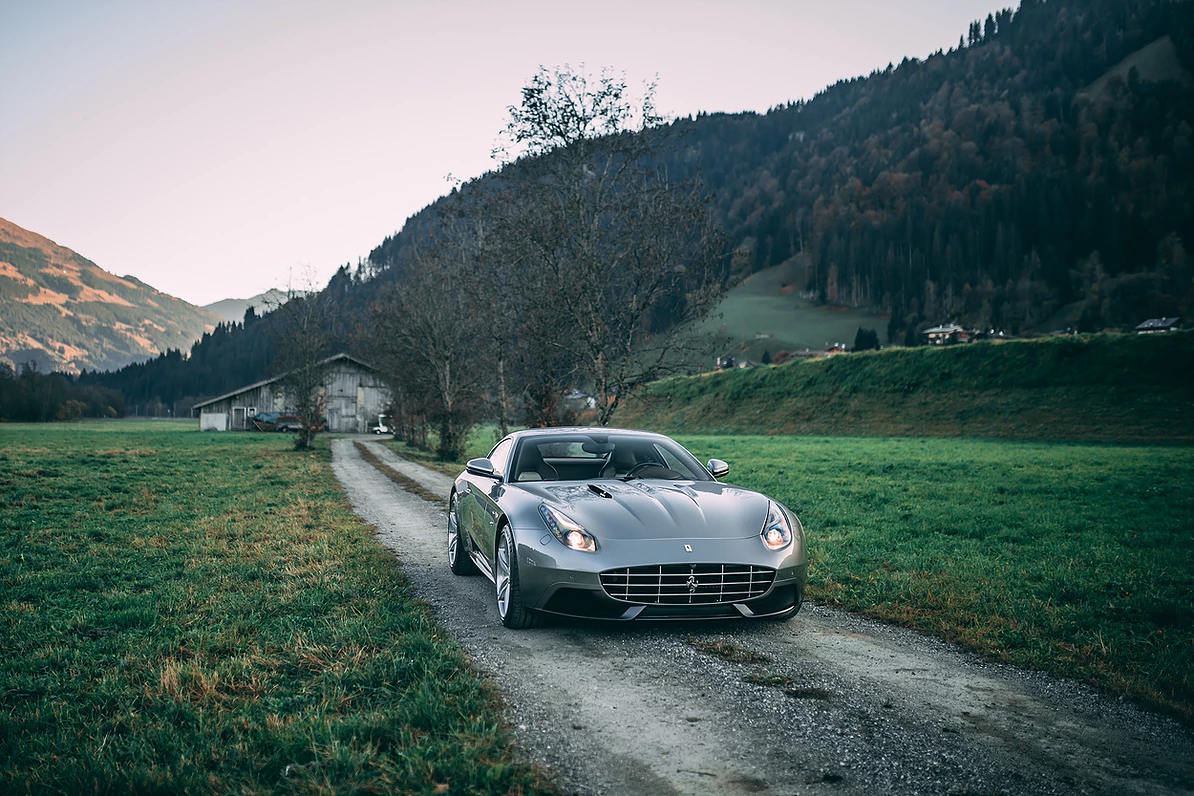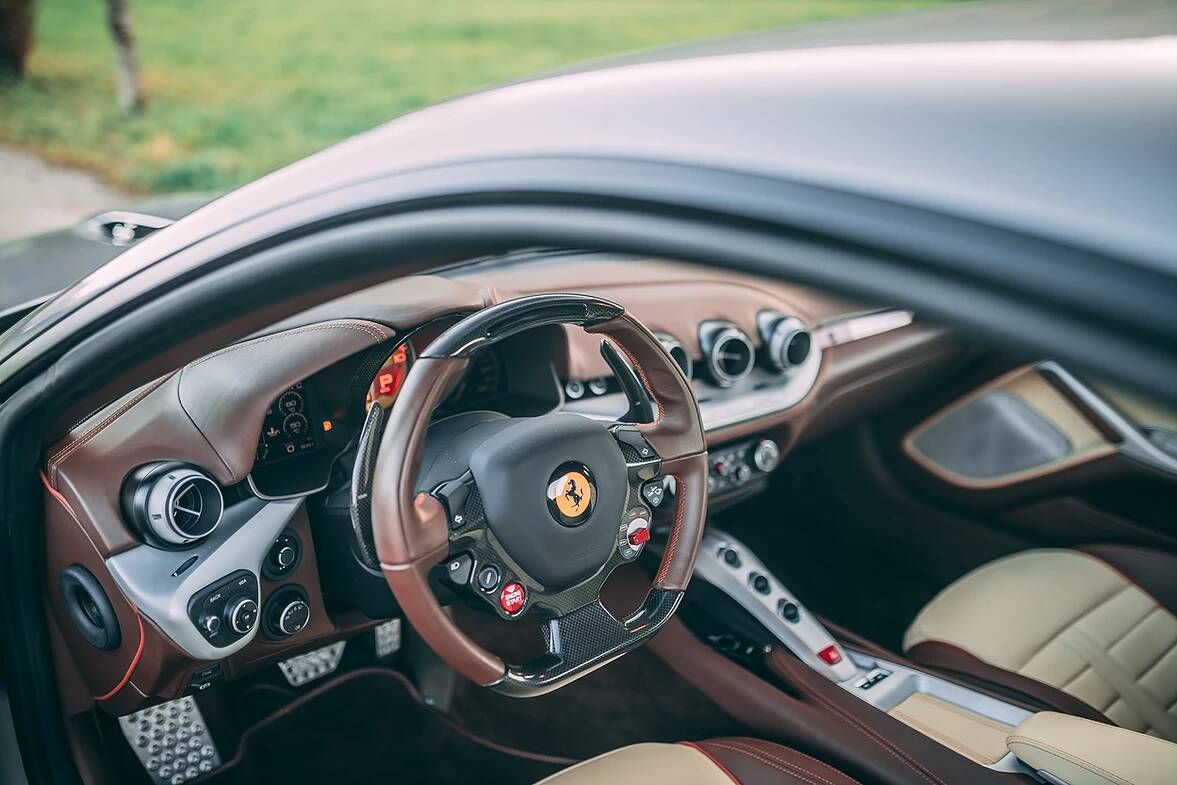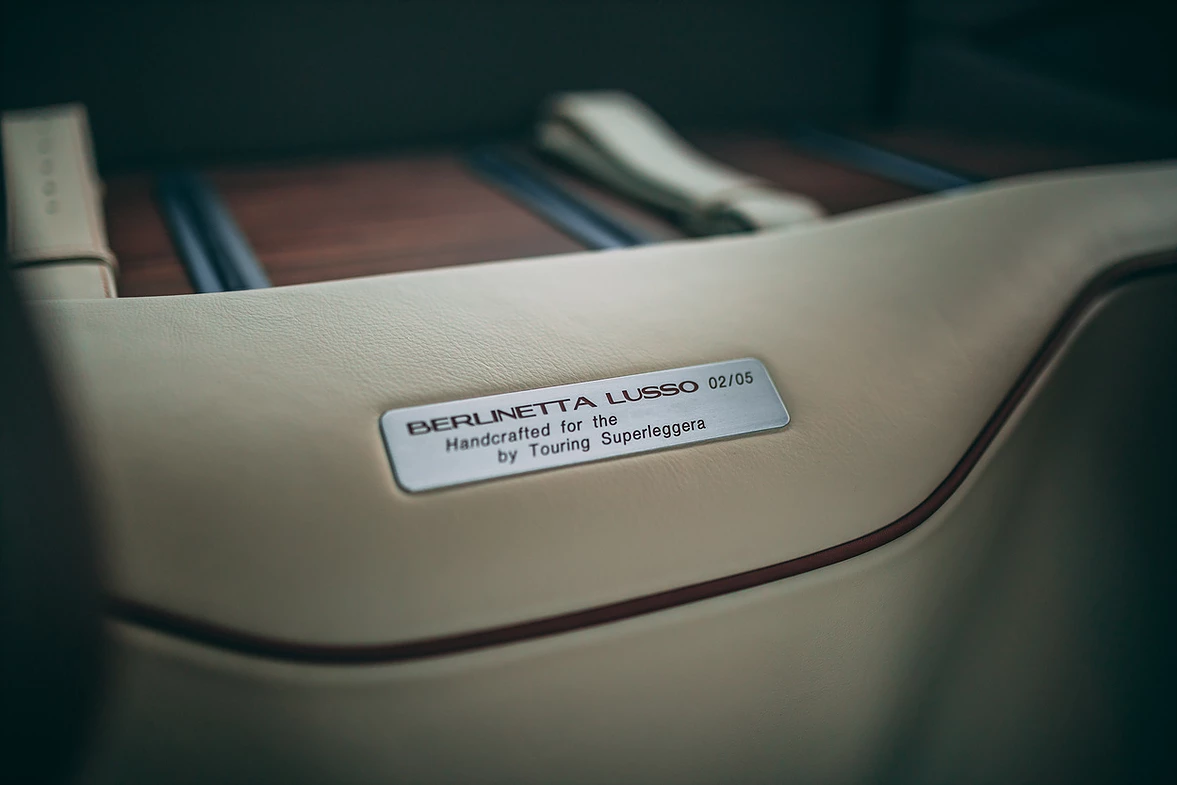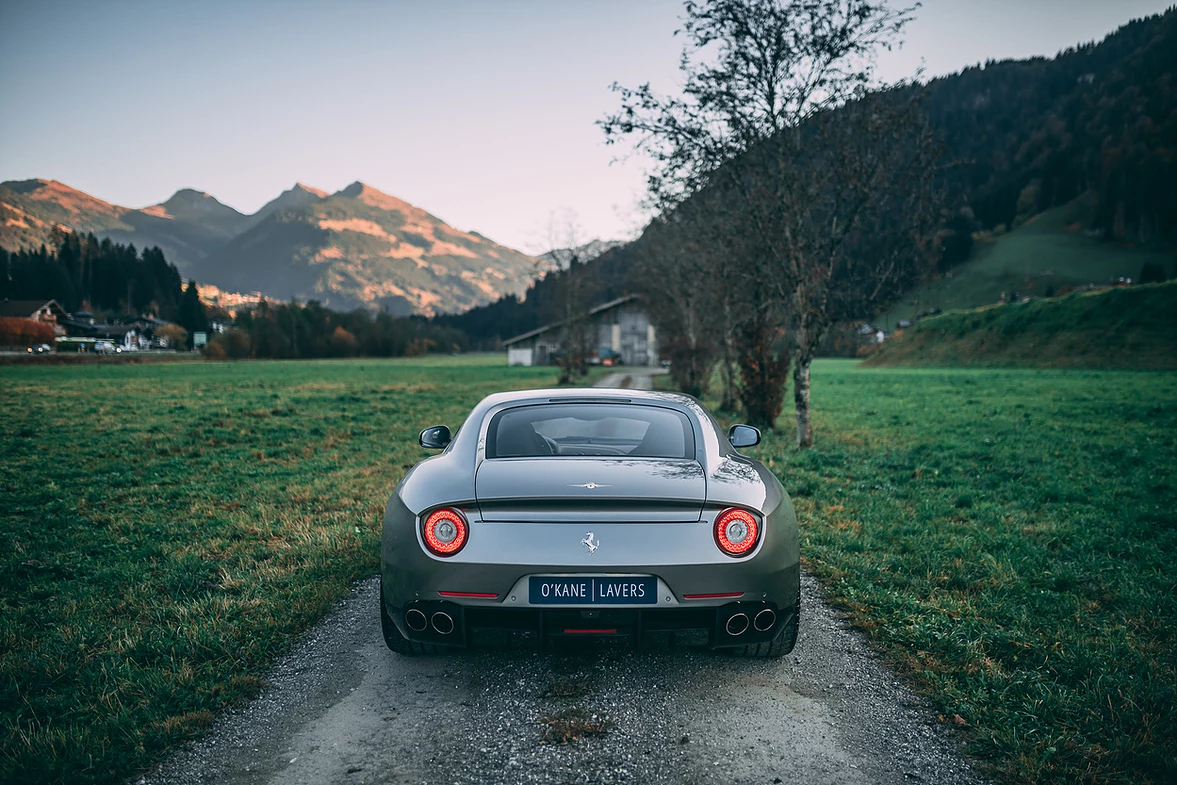Back in the day, when Enzo Ferrari was at the helm of the company bearing his own name, no more than a few hundred cars left Maranello each year. In 2018, Ferrari sold 9,251 cars, over 2,500 of those reaching American homes. It is, then, no wonder that the ultra-rich no longer want the 'average' Ferrari and look for something special, something doused in the uniqueness of vintage Ferraris. Carrozzeria Touring Superleggera heeded the trend and, in 2015, built five Berlinetta Lussos based on F12 Berlinetta underpinnings. It looks incredible while losing none of the on-road prowess of a standard F12.
Ferrari's F12 Berlinetta is bound to become a future classic as one of the last front-engined, V-12 monsters from Ferrari. Sure, its replacement, the 812 Superfast, gets all the acclaim nowadays but we're sure collectors will find the F12 with all of its 730 horsepower from that awe-inspiring 6.3-liter V-12 an interesting collector's item in the decades to come. Remember, no one wanted the 250 GTO when it was only a few years old either. So, you can imagine this re-bodied version, that looks at least as good if not better, commands a hefty price. Sadly, dealer O'Kane Lavers will only tell you the number if it thinks you're serious enough about buying the car.
2017 Ferrari Berlinetta Lusso Touring Superleggera
Carrozzeria Touring didn't touch the underpinnings of the F12 Berlinetta, although it did manage to shed some weight off the original F12 chassis, which has 12 different types of alloy, whilst increasing the torsional stiffness by 20%.
|
|
ids=872094,872095 |
no_overlay=false |
before_label=2017 Ferrari Berlinetta Lusso Touring Superleggera |
after_label=2015 Touring Superleggera Berlinetta Lusso> |
From the side, the car looks just stunning. The caved-in profile of the doors is gone. Instead, there's a major ridge starting from the tip of the front wheel wells that extends all the way towards the rear quarter panel, underlining in its path the curvature of the front flares while also working in tandem with the caved-in rocker panels that feature an air inlet immediately aft of the front wheels. On the standard F12, the grooved skirt separates itself from the door via black contouring.
|
|
ids=872096,872097 |
no_overlay=false |
before_label=2017 Ferrari Berlinetta Lusso Touring Superleggera |
after_label=2015 Touring Superleggera Berlinetta Lusso> |
Overall, the simplicity of the F12 as interpreted by Carrozzeria Touring exudes elegance the way a standard F12 will never be able to do. That's because the Touring version took a page or two from the 612 Scaglietti's and the 550 Maranello's book of style by going in with a 'less is more' mindset that has totally worked.
With a seven-speed dual-clutch transmission with flappy paddles and a dry weight of under 3,950 pounds, the F12 Lusso should reach 60 mph in about 2.8 seconds (the standard F12 needs 3.1 seconds to get to 62 mph) on its way to a top speed of 211 mph. 0-124 mph takes just 8.4 seconds in this car. With carbon-ceramic disc brakes, the SCM-E magnetorheological suspension with adaptive dampers, and an electronic LSD, the F12 Lusso is undoubtedly a serious supercar but we're dead certain its next owner would much rather have it sitting in a garage rather than thrash during a track day.
2017 Ferrari Berlinetta Lusso Touring Superleggera specifications
|
Engine |
6.3-liter F140 FC V-12 |
|---|---|
|
Horsepower |
730 HP @ 8,250 RPM |
|
Torque |
509 LB-FT @ 6,000 RPM |
|
Transmission |
seven-speed dual-clutch |
|
Weight |
3,950 lbs |
|
0 to 60 mph |
2.8 seconds |
|
Top Speed |
211 mph |
We don't have to mention how sad that is but, with this being the second of just five examples assembled, it may be the right thing to do. After all, it may trade hands the next time for many, many millions (not that it's not worth at least $1 million as it is). That's a hefty premium over a bone-stock F12 as one of those can be had for about $220,000 if you don't go for ultra-low-mileage $300,000+ examples but, hey, Ferrari made at least 1,000 F12s and only five have been transformed to Berlinetta Lusso spec. This is, at the end of the day, our only gripe - the world needs more of these around for people to gaze upon and childishly grin immediately after!
Coachbuilt Ferraris are about the rarest things you can get in 2019
It won't be long until naturally aspirated V-12s will be arcane, vestiges from a bygone era when people had yet to come up with turbochargers and, instead, resorted to simply adding cylinders to the engine. The Italians have always been poised to create marvellous V-12s but the particularities of a high-revving Italian 12-cylinder engine, such as its perfectly honed soundtrack, are what made these units famous in the middle or in front of Lamborghinis or Ferraris.
The tradition was then ruptured by a sudden interest in mid-engined cars, most likely spurred by Lamborghini's astounding Miura.
This is why Carrozzeria Touring Superleggera's creation is particularly special. Because it represents a refined take at a modern classic, without mentioning the obvious fact that re-bodied Ferraris are incredibly rare nowadays with Ferrari handling most one-off or limited-run jobs through its 'Special Projects' department. Back in the '90s, coach-built models were a more common occurrence with Pininfarina filling its bank accounts by taking in commissions from ultra-rich customers who wanted unique models. The last of them was Jim Glickenhaus who wanted to own a modern interpretation of the legendary winner of the 1967 24 Hours of Daytona, the Ferrari 330 P3/4. Pininfarina duly agreed and Glickenhaus reportedly paid $4 million for it 13 years ago or about $5.1 million today. Ferrari didn't like it and, probably, it's no big fan of the F12 Berlinetta Lusso either, but we definitely are.




